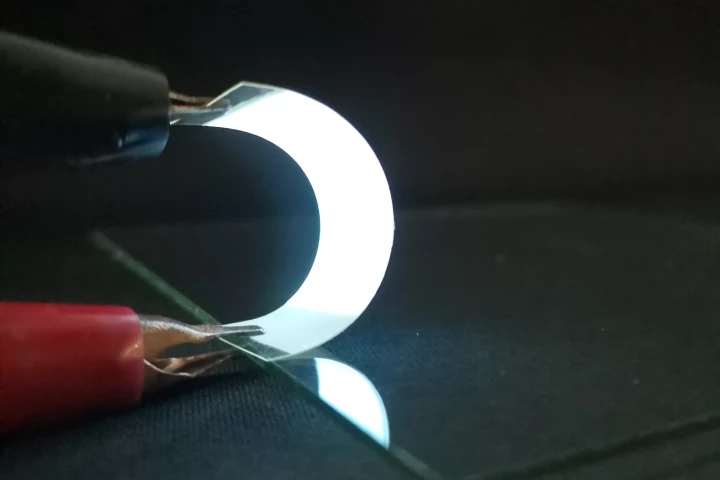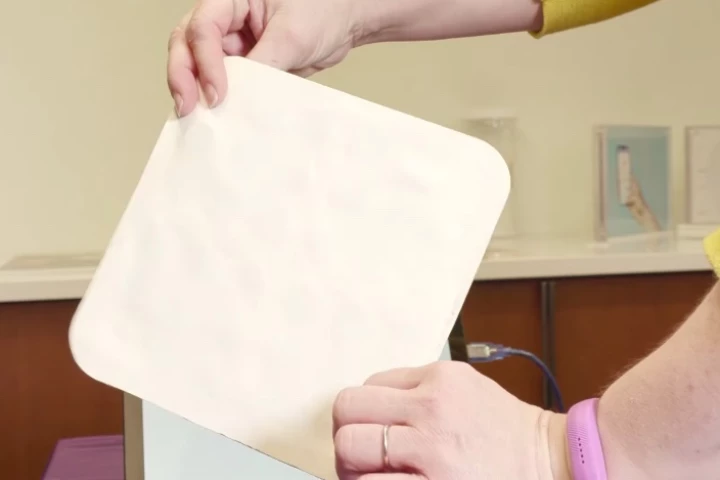Electronic skin
-
In order to keep from hurting their human coworkers, many robots have sensors that detect contact with people or other objects. Scientists have now devised a high-tech sweater which brings this functionality to robots that don't have it already.
-
Last year we heard about an "electronic skin" developed at City University of Hong Kong, which delivers tactile sensations to wearers. The university has now gone one better, with an e-skin that both senses and reproduces users' touches.
-
Scientists have developed a new electronic “tattoo” that can monitor a patient’s blood pressure continuously. The e-tattoo is made of graphene and can be worn for long periods without getting in the way, allowing for better health data.
-
Skin plays a key role in our sense of touch, but its sensitivity is hard to replicate. Now, researchers have developed a new type of electronic skin (e-skin) containing tiny embedded hairs that can precisely perceive touch and the direction it moves.
-
Facebook recently rebranded as Meta, with an eye toward the development of VR/AR tech. In one of its first projects since the announcement, it's collaborating with Carnegie Mellon University on the development of a touch-sensitive electronic skin.
-
There are currently a number of groups developing touch-sensitive electronic skin for robots. Scientists at Cornell University are pursuing a simpler approach, however, using shadow-imaging cameras to let robots know when they're being touched.
-
Although we've already heard about pressure-sensitive "skins" that could be applied to robotic appendages, scientists have created one for use on human fingers. And while you might wonder why they bothered, it actually has an interesting application.
-
Researchers in Australia have succeeded in developing an artificial skin that responds to painful stimuli, heat and pressure like real skin does, which they see as an important step towards intelligent machines and prosthetics.
-
Many of us now keep tabs on how we're doing by wearing health and fitness trackers, which run on batteries. Researchers from Caltech have developed an electronic skin that can be packed with sensors, and that's powered by the sweat of its wearer.
-
Skin-worn flexible electronics show great promise, in applications ranging from health monitoring to gesture control. The devices could soon also be more eco-friendly, as scientists have recently developed a method of making them from fish scales.
-
Medicine, soft robotics and wearable electronics are just a few of the fields that could benefit from a new hydrogel that's applied to the body. The transparent material can sense when it's being touched, bent, heated, or otherwise manipulated.
-
Although VR tech may allow users to see and hear computer-generated environments, the extent to which people can feel those worlds is still quite limited. That could be about to change, though, thanks to what's being called an "epidermal VR" system.
Load More











